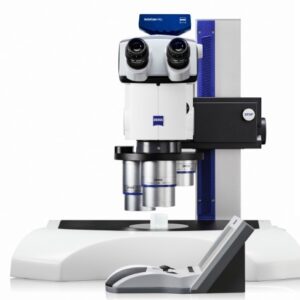Source: Unsplash
Before we can run, we need to walk. The same feels true for microscopes! Before we dive into some advance concepts, a review of the basics never hurts. Let’s discuss some basic concepts, specifically simple microscope magnifiers.
The simple microscope consists of a single lens traditionally called a loupe. A basic example of a single lens would be your standard magnifying glass or a jewelers’ lens. Back in the day, traditional microscopes were made in the same way and were sufficient for studying microscopic organisms.
So what is magnification, and what are some simple microscope magnifiers? The magnifying power of a microscope is really a series of relationships. You can calculate the magnifying power of a lens by dividing the least distance of distinct vision by the lens’ focal length, which is the distance from the lens to the plane at which the incoming light is focused. For example, a lens with a least distance of distinct vision of 25 cm and a focal length of 5 cm (2 inches) will have a magnifying power of about five times.
Now that we’ve defined simple magnification, how do we make it better? Let’s take a closer look (excuse the pun) at some microscope magnifiers.
Double Convex Microscope Magnifiers
For low powers, about 2-10×, a simple double convex lens is applicable. The image can be improved if the lens has specific aspheric surfaces.
For higher powers of 10-50×, there are a number of forms for magnifiers in which the simple magnifier is replaced by a compound lens made up of several lenses mounted together.
Plano-Convex Lens
A direct improvement in magnification can be obtained by the use of two simple lenses. Typical two-lens setups are called “plano-convex,” meaning flat on one side, outward-curved on the other, with the curved surfaces facing each other. Since the imaging properties are provided and shared by two components, the spherical aberration and the distortion of the magnifier are greatly reduced over those of a simple lens of the same power.
Mirrors
Reflecting microscopes work by magnifying the image through concave mirrors rather than convex lenses. One advantage of reflecting microscopes is that there is no chromatic aberration, and distortion and spherical aberration are limited by the carefully contoured aspheric magnifying mirror. These result is a clear image with much higher magnification.
That covers a good sample of the basics. In summary, know that microscopes have incredibly sophisticated means of producing images, but even our simplest methods have their uses. For more information, stay tuned to our blog or feel free to connect with our team





